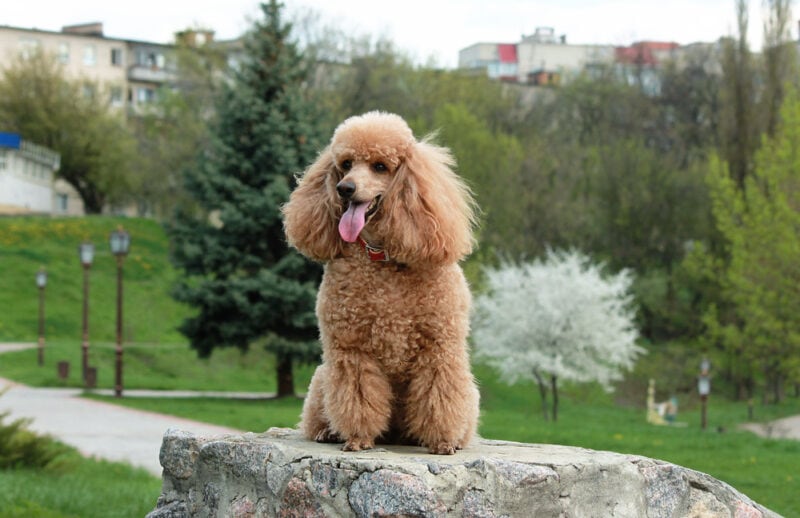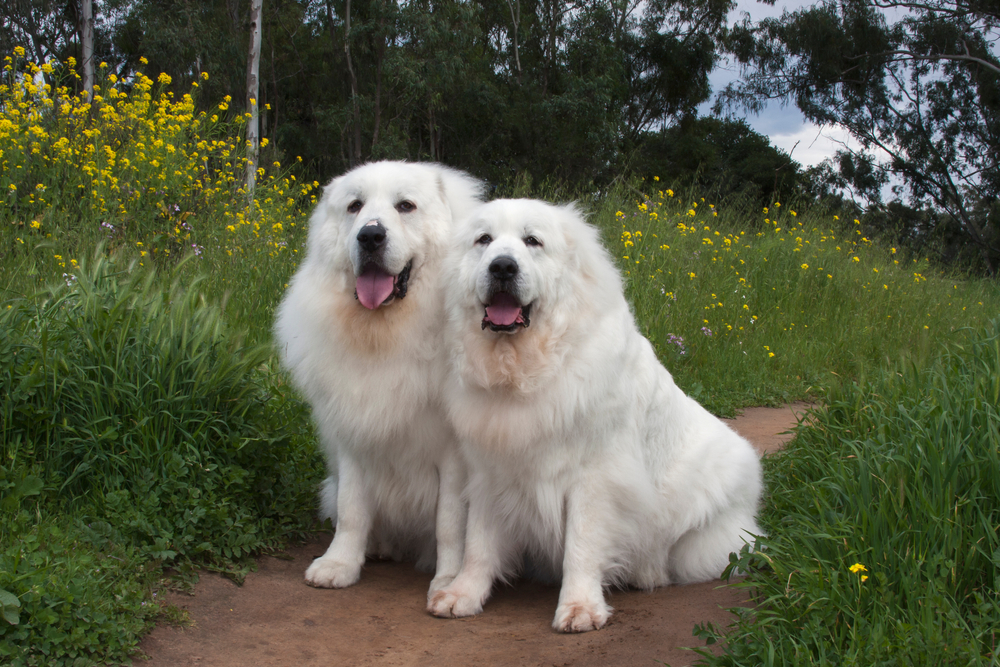Click to Skip Ahead
Apricot Poodles are not their own separate dog breed but instead a rare color variation of the Standard, Miniature, or Toy Poodle. Apricots have a solid reddish-orange tint to their coat thanks to a gene that restricts the melanin production in their coats. Their beautiful color is highly sought after and can make finding apricots for adoption incredibly difficult.
So, if you’ve ever wanted to know more about this unique colored Poodle, how it came to be, and what it’s like owning one, keep reading. We’ll take a deep dive into the apricot Poodle so you can learn all about this rare and stunning pup.
Breed Overview
Height:
15–24 inches
Weight:
40–70 pounds
Lifespan:
12–15 years
Colors:
Apricot
Suitable for:
New dog owners, families with older kids, people with allergies
Temperament:
Intelligent, active, friendly, mischievous
Apricot Poodle Characteristics
The Earliest Records of Apricot Poodles in History
Poodles are a very old breed, having been present in paintings as far back as the 15th century. In those times, however, most Poodles would have been parti-colored or white. The first recorded apricot Standard Poodle was born in 1898 and named Sowden Yellow Gall.
This beautiful new coloration became very popular throughout the United Kingdom, but it would take hundreds of years for the apricot Poodle to become prevalent in other Poodle sizes. It wasn’t until 1912 that the first apricot Miniature was born in Whippendell Kennel.
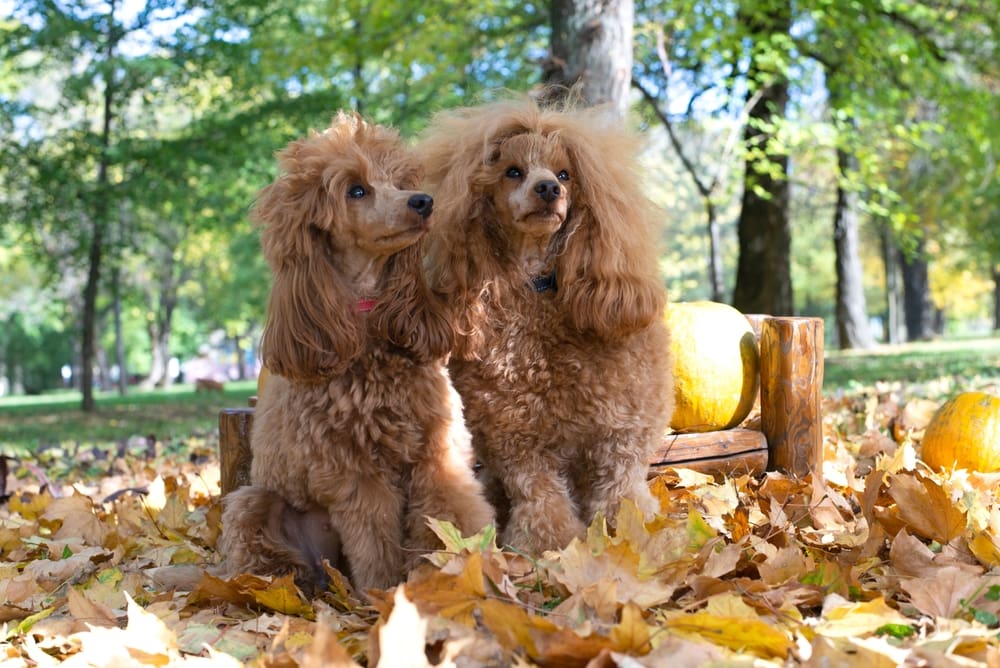
How Apricot Poodles Gained Popularity
During the 1930s, Poodles of all colors and varieties became more popular throughout North America. As a result, many American Poodle breeders started importing dogs from England to help enrich the country’s existing Poodle lines. During these formative years, the apricot coloration began spreading throughout several continents. These descendants of the original English apricot Poodles are responsible for all the beautiful apricots we have today.
Poodle breeding slowed down during WWII but picked up again in the 1950s thanks to two apricot kennels in England dedicated to producing apricot Poodles.
Because this coloration is very rare and recessive, not many puppies are available in this color. Though apricots are highly sought after, the lack of availability makes them less popular than they could be.
Formal Recognition of the Apricot Poodle
All Poodle sizes—Toy, Miniature, and Standard—were first recognized as breeds by the American Kennel Club in 1887. It took a bit longer for other clubs to recognize the breed. The United Kennel Club didn’t recognize Poodles until 1914.
Not every kennel club accepts apricot as a standardized color. For example, the Federation Cynologique Internationale, the Belgium-based kennel club, only recognizes black, white, brown, grey, and fawn as Poodle colors.
The first apricot Poodle to win an American championship was Carillon Amour in 1938.
People planning to show their Poodles must know that there are restrictions on size, specific clips necessary for its coat, and preferred coloring for its nose, lips, eye rims, and eyes. While amber eyes and liver-colored noses, eye rims, and lips are permissible for the apricot Poodle, they’re not “desirable.”
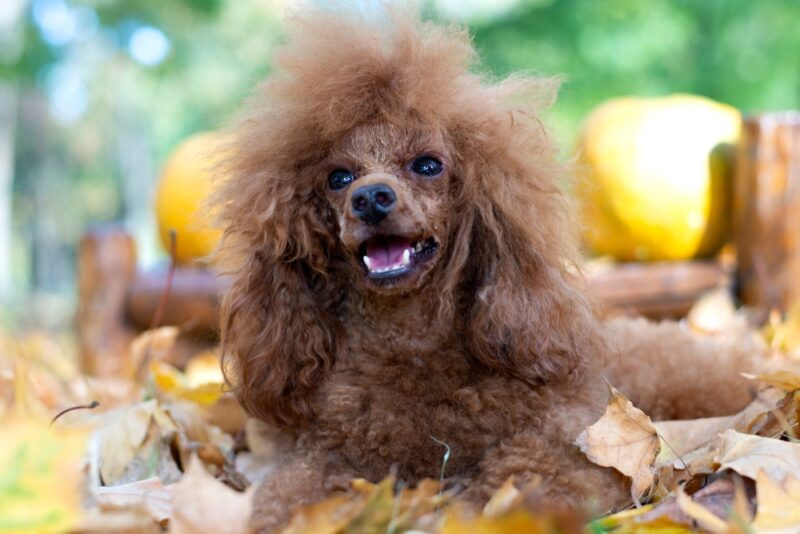
Top 4 Unique Facts About Apricot Poodles
1. Many people, even breeders, confuse their Poodle colors.
Though apricot coloring is one of the most popular Poodle colors, it’s easy to get their shade wrong. Even Poodle breeders will occasionally mix up the colorations. As a result, it’s not uncommon for an apricot dog to be called red or vice versa. Sometimes, even deep, cream-colored Poodles will get mistaken for apricots.
True apricot Poodles have a diluted brown, yet bright and sunny, color to them. However, it can get even more confusing when you consider that many apricot Poodles have some color deviation in their coat, such as slightly darker feathering on the ears.
2. Apricot Poodles can fade over time.
As if determining if a Poodle is an apricot or not wasn’t tricky enough, some dogs’ coats’ will change color over time. Owners will sometimes not even realize that their pup is an apricot until it’s a year or two old. Many tan-colored or light brown Poodles can fade into an apricot shade as they age. Some dogs even go through a second coat fading phase when they’re between 2 and 3 years old, when their coats will lighten up even more.
3. Apricot Poodles are the rarest color.
You know by now that Poodles come in a wide array of colors. The American Kennel Club lists a handful of colors as acceptable by their standards, including blue, black, brown, café au lait, gray, and apricot. Apricot Poodles are not only among the rarest as their unique coloring is caused by a recessive gene, but they’re one of the most recently developed colorations, too.
4. The first Apricot Poodle puppy wasn’t considered an apricot at first.
Sowden Yellow Gall, the first apricot puppy on record, was initially considered a “liver” color. Its parents were liver brown and white, which made it only logical that the puppy would also be a liver-y color. However, as time went on and the puppy grew up, its owner noticed that it had a different color tone and should be considered its unique shade.
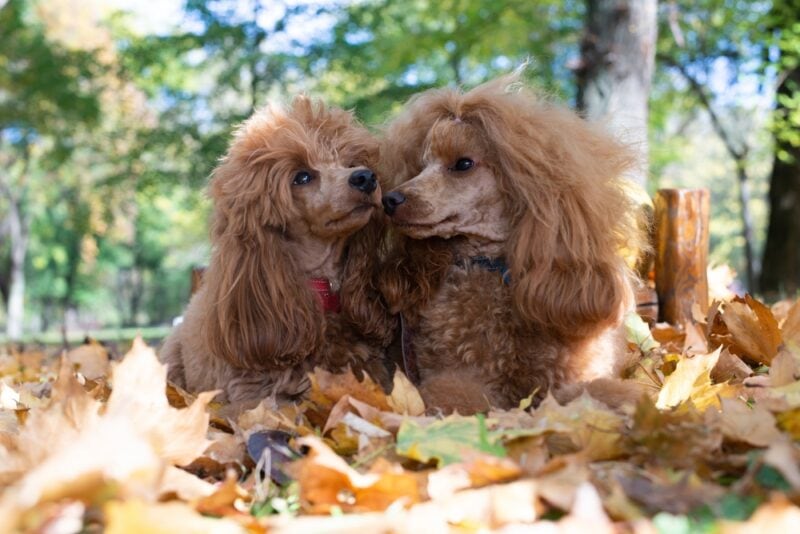
Do Apricot Poodles Make a Good Pet?
Poodles of all sizes and colorations make fantastic pets. Coloring does not play a role in the personality or temperament of any puppy. Poodles are extremely intelligent, easy to train, and very social animals. They are very lively and active, thriving on the attention of their humans. However, Poodles need training to nip bad habits in the bud, such as nuisance barking or aggression.
Miniature and Toy varieties can live as old as 17, while Standards tend to live between 12 and 14 years. Grooming is a necessity for Poodles of any size. Their coats can become matted, so they need to visit a groomer often and be brushed daily.
- You may also be interested in: Brindle Poodle
Final Thoughts
Apricot Poodles are a beautiful color variation of the Poodle dog breed. Unfortunately, because they are a recessive coloration, apricots are a very rare Poodle color, which makes them highly sought after and probably rather pricey. If you’re considering adopting an apricot Poodle, it’s best to get in touch with any potential breeders and put your name on a waitlist sooner than later.
Featured Image Credit: Anna_Bondarenko, Shutterstock

